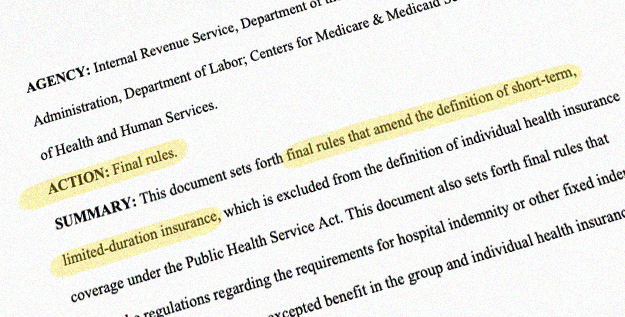June 2024 Fed Preview – Forbes Advisor – Technologist
Editorial Note: We earn a commission from partner links on Forbes Advisor. Commissions do not affect our editors’ opinions or evaluations.
If you’re waiting for interest rates to drop, you might have to wait a bit longer. Investors are anticipating the Federal Open Market Committee will once again keep interest rates the same at its upcoming meeting, which ends on June 12.
The FOMC will likely maintain its current fed funds rate target range of between 5.25% and 5.5%, its highest target level since 2001. The Fed is also expected to begin tapering the pace at which it rolls off assets from its balance sheet as the central bank continues to fight to bring down sticky inflation.
The Fed is trying to navigate a “soft landing” for the U.S. economy in which it drops inflation to around 2% without triggering a U.S. economic recession.
No June Rate Cut Expected
The S&P 500 has gained 11.8% in 2024 on optimism surrounding a potential Fed pivot to rate cuts, but a policy misstep at this point could have major economic implications heading into the second half of 2024.
The bond market is currently pricing in a 99.1% chance the Fed will maintain interest rates at current levels and only a 0.9% chance of a 25 basis point rate hike in June, according to CME Group.
The bond market is pricing in a 47.6% chance the FOMC will issue its first interest rate cut of the year at its September meeting. The market is also pricing in a 36.9% chance of at least two rate cuts by the end of the year.
The Federal Reserve is expected to continue to allow up to $35 billion in agency mortgage-backed securities to mature and roll off its balance sheet per month. However, the FOMC said in May that it will reduce the monthly cap on Treasury securities run-offs from $60 billion to $25 billion starting in June.
The Federal Reserve’s balance sheet has dropped from a record high of $8.96 trillion in May 2022 to around $7.3 trillion in May, but it remains well above its pre-pandemic size of $4.15 trillion in late February 2020.
Economic Projections—Unemployment Low, Inflation Remains
The FOMC will also update its long-term U.S. economic growth projections, which include forecasts for gross domestic product growth, unemployment rates, interest rates and inflation.
The Fed’s most recent economic projections in March called for:
- 2024 U.S. GDP growth of 2.1%
- An unemployment rate of 4%
- And two interest rate cuts by the end of the year
The Fed also maintained its 2024 growth forecast for the core personal consumption expenditures, or PCE, price index, its preferred measure of inflation, at 2.4%.
In March, FOMC members projected core PCE inflation, which excludes volatile food and energy prices, would drop to just 2.1% in 2025, but those expectations may have changed in recent months.
Investors will be paying close attention to whether Fed members still anticipate two interest rate cuts in 2024 and just how low committee members believe rates could fall in 2025 once the Fed begins loosening its monetary policy.
Inflation Data Remains Mixed
U.S. inflation is now well below 2022 highs, but inflation data in the first half of 2024 has been mixed.
Persistent so-called sticky inflation suggests the Fed still has a challenging road ahead to reach its 2% target. The Commerce Department reported the core PCE price index was up 2.8% year-over-year in March.
The consumer price index, or CPI, was up 3.4% year-over-year in April, down from its 3.5% annual gain in March. Core CPI was up 3.6% from a year ago.
Is the Economy Finally Softening?
Elevated interest rates increase borrowing costs for consumers and corporations, weighing on economic growth.
The University of Michigan Survey of Consumers sentiment index for May was down 12.7% on a monthly basis and well below economist estimates, suggesting elevated interest rates and sticky inflation may finally be impacting consumer behavior.
In addition to growing pessimism among consumers, U.S. GDP growth slowed from 3.4% in the fourth quarter of 2023 to just 1.3% in the first quarter of 2024.
On May 3, the U.S. Labor Department reported:
- The economy added 175,000 jobs in April, missing economist estimates of 240,000 jobs added.
- The U.S. unemployment rate remained at 3.9%, while the labor participation held at 62.7%.
- Average U.S. wages were up 3.9% from a year ago and up 0.2% compared to March.
Jeffrey Roach, chief economist for LPL Financial, says cooldowns in the labor and housing markets may help the Fed reach its inflation goals in coming months.
“The job market is likely cooling off and that should translate into improving inflation dynamics, giving the markets some reprieve as investors struggle with uncertain interest rate expectations,” Roach says.
In The Fed’s Own Words
Investors don’t anticipate any major surprises from the FOMC in June, and recent commentary from Fed officials seems to support the idea the central bank is in no hurry to cut rates.
In a speech on May 24, Federal Reserve Governor Christopher Waller said it’s possible that R-star has increased.
R-star is the natural interest rate that neither stimulates nor restricts U.S. economic growth when inflation is stable. If R-star has increased, it could mean interest rates will remain elevated even after the Fed has reached its 2% inflation target.
“If the growth in the supply of U.S. Treasuries begins to outstrip demand, this will mean lower prices and higher yields, which will put upward pressure on R-star,” Waller said.
In a speech on May 28, Fed Governor Michelle Bowman questioned the decision to begin tapering the pace of monthly balance sheet run-offs.
“While it is important to slow the pace of balance sheet runoff as reserves approach ample levels, in my view we are not yet at that point,” Bowman said.
In an interview with CNBC on May 28, Minneapolis Federal Reserve President Neel Kashkari said he would need to see “many more months of positive inflation data” before interest rate cuts are appropriate, even leaving the door open for a potential rate hike if the Fed’s inflation progress continues to stall.
“I don’t think we should rule anything out at this point,” Kashkari said.
Fed Moves Could Have Political Implications
Alex McGrath, chief investment officer for NorthEnd Private Wealth, says the combination of a slowing economy and persistent inflation is ramping up pressure on Fed officials and could have major political ramifications for President Joe Biden.
“Stagflationary conditions would be a pretty awful look for a Fed that believed inflation was transitory two years ago and very well could be the final nail in a political coffin for Biden,” McGrath says.
“That proverbial rock and a hard place the Fed wanted to avoid is staring them square in the face because should the macro data continue to slide and should inflation continue to be sticky, cuts coming to the rescue isn’t a solution and it’s the only tool they have in the bag at this point.”
What To Watch
The upcoming May U.S. jobs report on June 7 could potentially be the most important report in months.
If the Labor Department reports weaker-than-expected jobs growth for the second consecutive month, U.S. consumers could get spooked and consumer sentiment could take another big hit entering the summer months. However, if jobs growth comes in well above expectations, it could mean the next leg of the Fed’s inflation battle will be even more difficult.
Carol Schleif, chief investment officer at BMO Family Office, says the path forward will likely be a bumpy one for the Fed and the economy.
“We continue to think the obsessive focus on Fed policy misses the important mark of the underlying health of this economic and innovation cycle,” Schleif says.
“With employment in better balance [and] economic growth continuing at a modestly stronger but not an inflation-inducing pace, the Fed can be patient—and investors need to keep their focus on fundamental progress versus Fed speculation.”
In addition to the jobs report on June 7, the Fed will also get a couple more final data points on inflation before it announces its interest rate decision on June 12.
The Bureau of Economic Analysis releases its April PCE inflation reading on May 31, and the Labor Department releases its May CPI inflation reading on June 12 just hours before the FOMC issues its official policy statement.
Looking for a financial advisor?
Get started with a financial advisor with Personal Capital to work out your financial strategy


